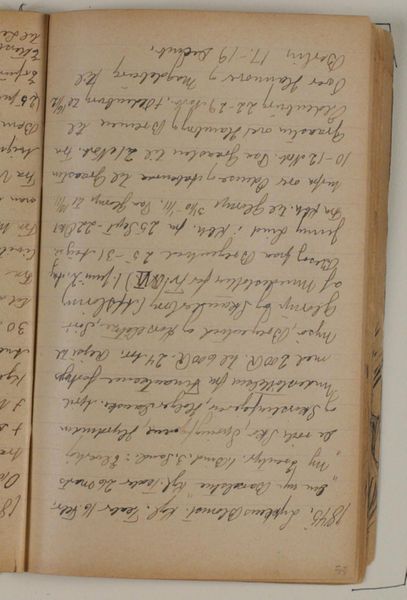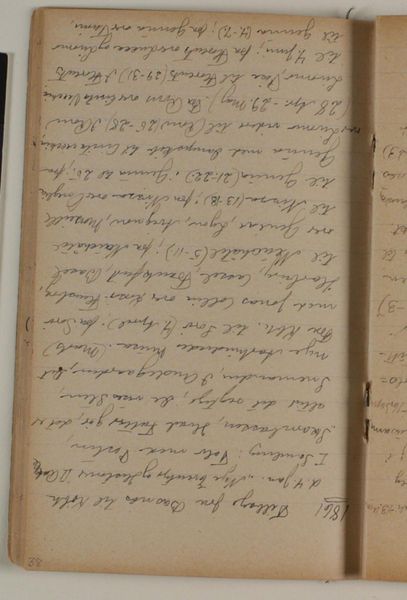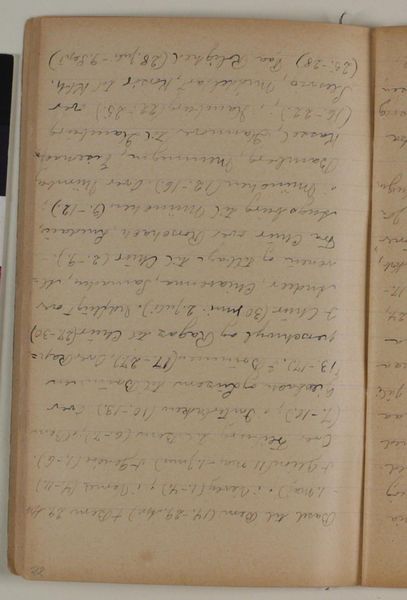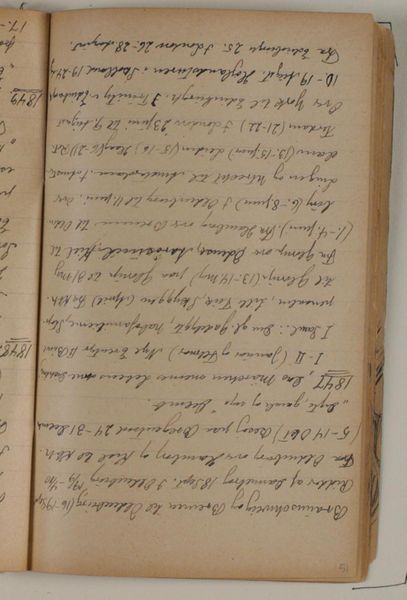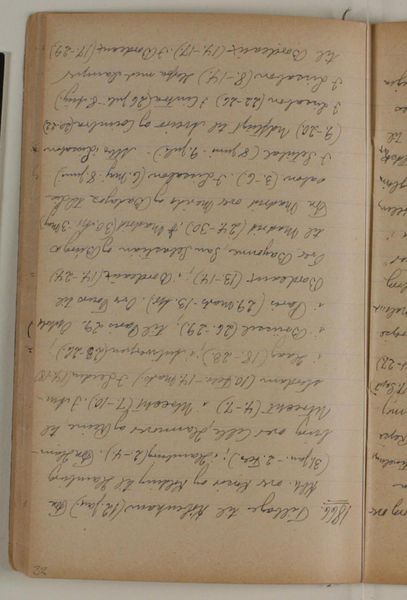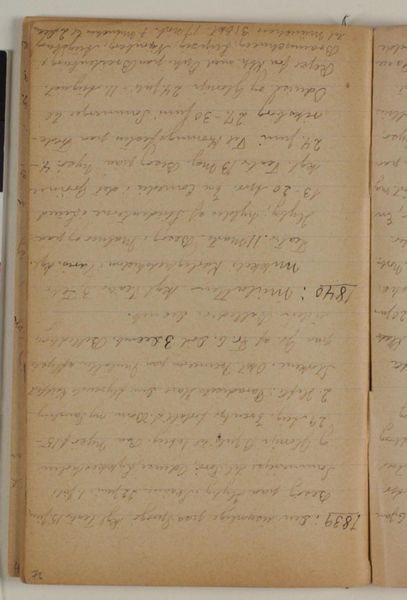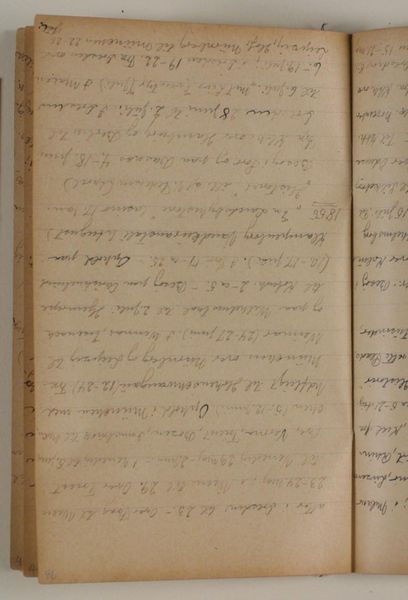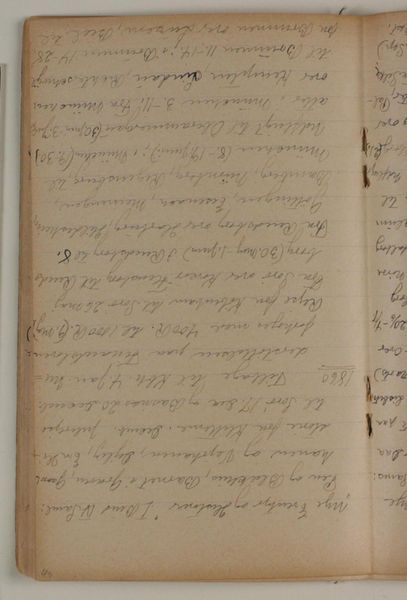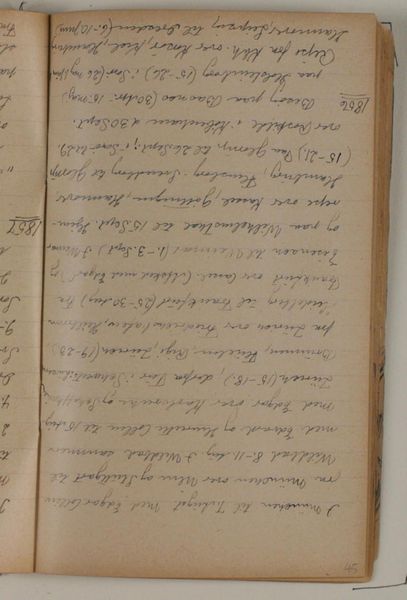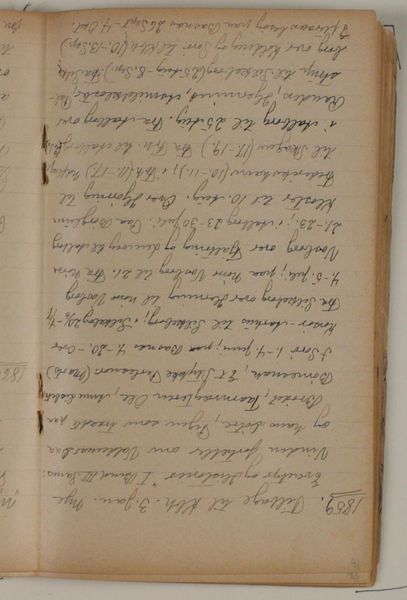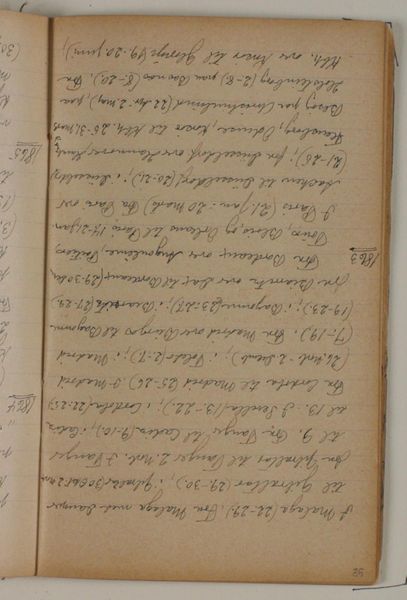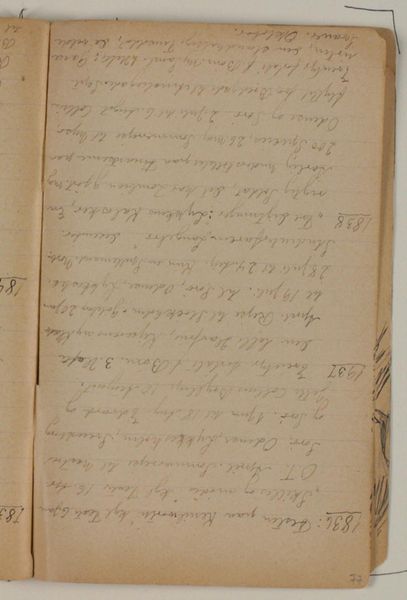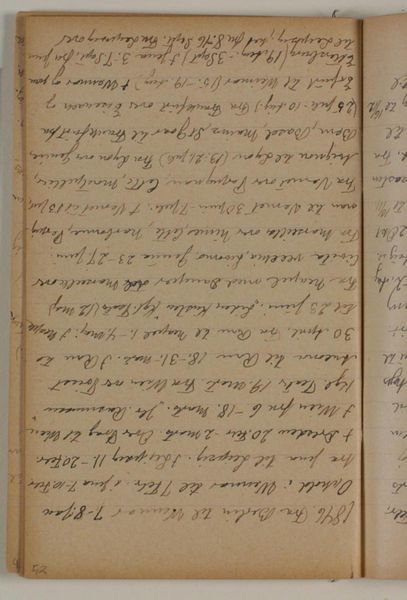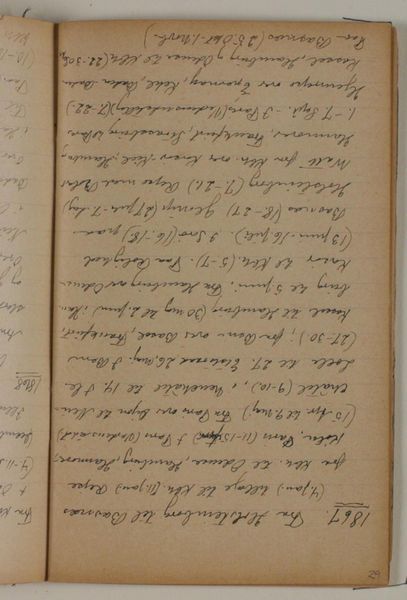
Tidstavle over H.C. Andersens liv 1843-1828 1930 - 1938
0:00
0:00
Curator: Here we have Niels Larsen Stevns's "Tidstavle over H.C. Andersens liv 1843-1828," a drawing made between 1930 and 1938 using pencil and colored pencil on paper. The artist charts key life moments using both portraiture and calligraphy. The script gives it such an intimate quality. What do you make of it? Editor: It looks like a page from a journal, almost like a personal reflection rather than a formal artwork. The handwritten notes create a sense of immediacy. Is there a structure that underpins its apparent randomness? Curator: Indeed. Note how the chronological arrangement defies linear conventions, presenting instead a cyclical perception of time. Consider the juxtaposition of tight, controlled script with more expressive calligraphic flourishes. How do these contrasts affect the visual rhythm? Editor: I see. The combination of the uniform script and expressive calligraphy is key. It's like two different modes of expression existing in one space, one factual, the other, more emotional. But isn't Stevns, working in the 1930s, part of the modernist movement? What makes him work with a mode of drawing more in line with Romanticism? Curator: You raise an astute point. Yet Stevns appears less concerned with a complete rejection of historical styles than with synthesizing them. This combination is essential. It generates tension and ultimately, enriches the compositional density. What, for you, is the final effect? Editor: I'd say it provides a window into the subject's mind and life, a meeting of facts and impressions presented almost as a stream of consciousness. I never considered this was part of Romanticism. Curator: Precisely. And from a formal standpoint, the dynamism arises not just from its explicit subject but from how Stevns manipulates textual and graphical components. I am glad we have unveiled further complexity. Editor: It makes me see Romanticism in a whole new way and realize the beauty of artistic forms interacting to tell an important story.
Comments
No comments
Be the first to comment and join the conversation on the ultimate creative platform.
